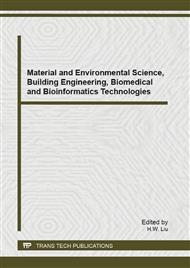p.530
p.535
p.539
p.542
p.546
p.550
p.555
p.558
p.562
Diatom Distributions in the Eastern Yangtze River and the Main Lakes, Jiangsu Province, China, and their Significance for the Forensic Diagnosis of Drowning
Abstract:
In the presented paper, diatom distributions in the eastern Yangtze River and the main lakes, Jiangsu Province, China, were investigated, and on this basis, its significance for the diagnosis of drowning was discussed as well. Totally, 14 water samples were collected in 5 sites along the eastern Yangtze River and in 3 lakes within Jiangsu province of China in June and September, 2012. The genus and the quantity of the diatoms in the water samples were subsequently investigated using scanning electron microscopy (SEM). With reference to diatom distribution, there is significant difference between the waters sampled from the different sites and in the different months. These data on diatom distribution are helpful to the diagnosis of the cause of the death as well as to the determination of the drowning site in cases of drowning. Therefore, it is necessary to develop the database of diatoms in more extensive water bodies for the forensic diagnosis of drowning in the future.
Info:
Periodical:
Pages:
546-549
Citation:
Online since:
September 2013
Price:
Сopyright:
© 2013 Trans Tech Publications Ltd. All Rights Reserved
Share:
Citation:


